The Socotra Cormorant (Phalacrocorax nigrogularis) is an exclusively marine bird, which breeds only on flat-shored desert islands and is a near-endemic species of the Arabian Gulf. It is named after the island of Socotra where the only report of breeding on the Socotra archipelago are from the outlying islet of Kaal Faroon, north of Abd el Kuri island, in 2001, when some 6000 pairs were nesting.
This species is considered Threatened to Endangered, Vulnerable by Birdlife International (Birdlife Species Fact sheet, world population 450000 – 750000 decreasing). It is extremely sensitive to human pressure and at least 12 colonies have become extinct over the last 30 years, representing a potential decline of up to c 80,000 pairs (c 26% of the population). Today only 13 colonies are thought to remain of which Suwad Al Janubiyah on Hawar is the largest documented colony.
It is rare in the Red Sea. In the Arabian Sea, colonies exist on Hasikiyah in the Hallaniyat group, Dhofar Oman and further south in Yemen nesting has been recorded on Baraqa, and Sikha island and in Socotra archipelago on Kaal Faroon.. It seems to have almost disappeared from the northern part of the Arabian Gulf but breeding records exist for Kurayn (1992) Arabiyah (extinct), Kuwait on Umm al Maradim (extinct) and Qaru (extinct). There are probably no more than 100 pairs breeding in this zone today. The Gulf of Salwa holds the highest breeding concentration of this species today, representing over half the world population.
This large bird has an extremely restricted range, with two sub-populations now breeding at a total of just nine locations. The northern sub-population breeds on islands off the Arabian Gulf coasts of Bahrain, United Arab Emirates (UAE), Saudi Arabia, Qatar and possibly the Islamic Republic of Iran (breeding not confirmed since 1972). The much smaller southern population breeds on one or more islands off the Arabian Sea coast of Oman and in the Gulf of Aden off Yemen.
The Socotra cormorant is legally protected across most of its range. In addition, some breeding sites, such as the colonies on the islands of Marawah and Al Yasat in the Emirate of Abu Dhabi, have been specifically protected. Nevertheless, the sites of several more colonies desperately require the same protected status
The relatively large but extremely restricted population of Socotra cormorants is primarily threatened by the fast pace of coastal development on its breeding islands for residential and tourist use, which is disturbing and displacing many colonies. This bird’s already threatened status is exacerbated by marine oil spills; the Socotra Cormorant is probably the most commonly found oiled dead bird around the Bahrain coastline.
The enormous colonies of Socotra cormorants form a spectacular sight. With their primarily black plumage, black bill, and black legs, the mass of jostling black shapes almost appear like a single moving organism, blanketing and enveloping the sandy bays on which they live. At the start of the breeding season, adult Socotra cormorants are in peak condition, sporting an extra glossy black plumage on their head, neck, rump and underparts. The back and wings are a shiny dark bronze-green colour, and during the breeding season, fine, white flecks appear on the neck of both sexes.
In Kuwait, the Socotra Cormorant is considered an uncommon disperser in spring, summer and autumn that has bred on the more southern off-shore islands in the past. Generally it is more easily seen in the South of Kuwait, quite often from the Al Kout Mall in Fahaheel, off the point at Mina Al Zour (which has restricted access) and just off-shore from Khiran where it is often seen perched on the off-shore buoys 200m from the beach or flying up and down the coast. Generally, it is first year birds that are seen, but these can occasionally be interspersed with sub-adult and adult birds
Factsheet: Socotra Cormorant Phalacrocorax nigrogularis

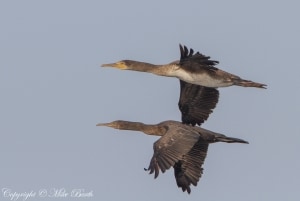
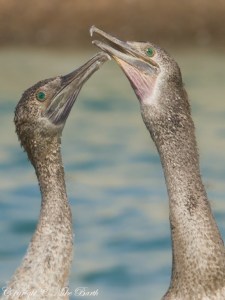
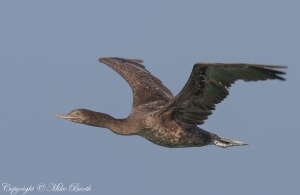
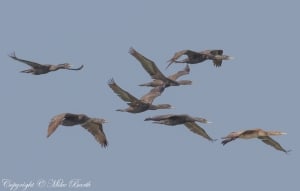
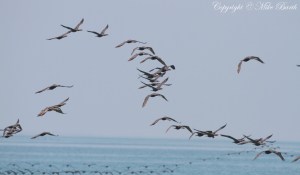
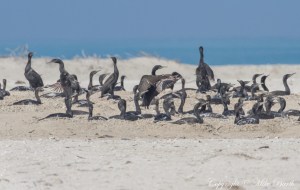



















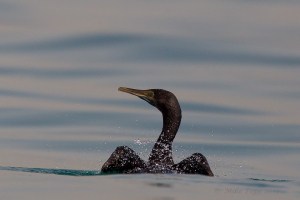
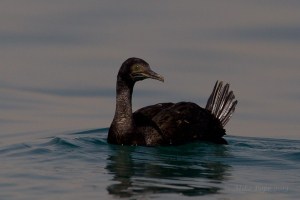
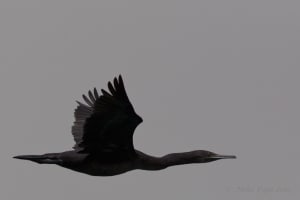
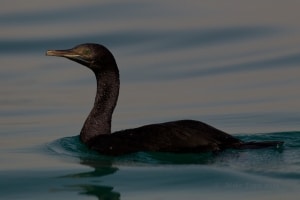
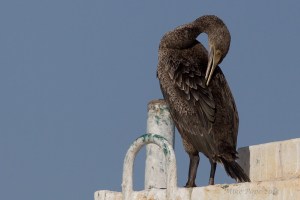
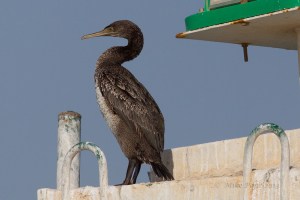
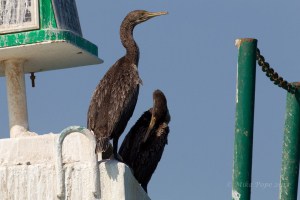
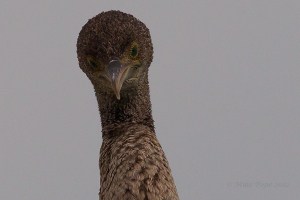
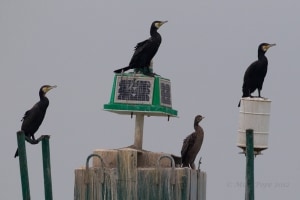
Leave a Reply